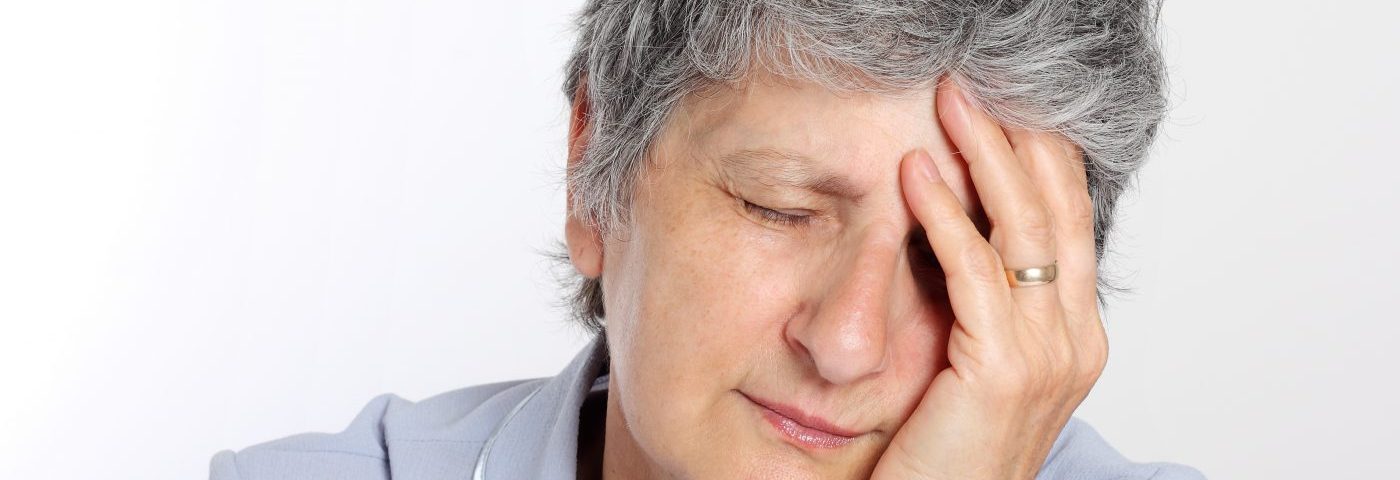Women with facial muscle pain — with or without fibromyalgia — reported that jaw-opening exercises, warm compresses, yoga, and meditation eased their pain better than most commonly used pain management therapies such as oral appliances (mouth guard, splints) and transcutaneous electrical nerve stimulation, according to a study.
The study, “Perceived helpfulness of treatments for myofascial TMD as a function of comorbid widespread pain,” was published in Clinical Oral Investigations.
Temporomandibular disorders (TMDs), also known as temporomandibular joint disorders, are a heterogenous group of conditions that can cause pain in the jaw joint and in the muscles that control jaw movement. The myofascial kind, relating to muscles, is the most prevalent subtype.
According to the study, more than 10 percent of women who complained of chronic pain have myofascial TMD, and around 75 percent of fibromyalgia patients report myofascial TMD-like pain.
Patients often seek consultation with dentists for their pain-related TMD. Diagnostic guidelines recommend assessing pain in the head and jaw but also in the body. However, dentists “do not routinely assess (widespread pain),” the researchers stated.
Traditional TMD treatments, including oral appliances, are usually localized to the face; however, if a patient experiences pain in other body parts as well, using splints or mouth guards would not be effective in relieving all of their pain.
“Oral appliances are a common first-line treatment for TMD, despite mixed research results regarding their benefit. Even when oral splints have been found to have some benefit, they have not been found as effective for patients who also have widespread pain in the treatment of myofascial temporomandibular disorder (mTMD),” Vivian Santiago, PhD, MPH, an assistant research scientist at New York University (NYU) College of Dentistry and the study’s first author, said in a news release.
Whether facial pain treatments benefit people with TMD and fibromyalgia to the same degree as TMD alone, without widespread pain, remains unclear.
Therefore, the NYU study sought to determine whether women with mTMD and fibromyalgia undergo different treatments or have distinct therapeutic responses compared with those without widespread pain.
Investigators recruited 125 women (from 19 to 78 years old) with mTMD, diagnosed according to the Research Diagnostic Criteria. Twenty-six of the women had fibromyalgia.
The team observed 53 women with widespread pain, and 72 with TMD only (without fibromyalgia or widespread pain) in the study sample. The researchers took into consideration research criteria for fibromyalgia, self reports of fibromyalgia diagnosis, and reports of problems with widespread pain in the previous six months.
Participants were examined and asked about their treatment history, and for their opinions about the impact of those treatments on their pain.
Around 59 percent (74 women) of the sample used oral appliances, 54 percent (68 women) practiced physical therapy, and 35 percent (44 women) performed jaw exercises at home.
The women used other techniques to ameliorate pain, which included acupuncture, chiropractic manipulation, trigger point injection, transcutaneous nerve stimulation, exercise or yoga, meditation, warm compresses, massage, botox, and vocal exercise.
Subjects often used a median of two therapeutic approaches (range was from none to 9).
No differences were found in the frequency of traditional treatments reported by patients with or without fibromyalgia. In fact, oral splints were used as frequently among patients with fibromyalgia as those without, “suggesting that few dentists incorporated evaluation of widespread pain into decisions on treatment options,” the authors wrote.
Women with fibromyalgia used more alternative approaches such as acupuncture and chiropractic manipulation, but these were primarily combined with oral appliances, and no significant difference was found on pain relief between patient groups.
Most patients who underwent physical therapy and alternative treatments (jaw exercises, yoga or exercise, meditation, massage, and warm compresses) said the therapies helped them reduce their pain.
The presence of fibromyalgia did not influence whether or not the women underwent physical therapy. However, women with TMD and fibromyalgia reported a higher rate of improvement with physical therapy.
A lower rate of self-reported improvements was observed among the 72 patients who mentioned they benefited from using oral appliances, with 68% of them stating that the treatment helped them at least a little. However, 11 percent reported it worsened their pain. Self-reported improvement among oral appliance users was consistently lower whenever more than one technique was used.
Although there was no statistical significance in the self-reported improvements between treatment approaches, the researchers consider oral devices not to be therapeutically superior to self-management.
“Oral appliances did not outperform self-management care techniques in improving facial pain. Our results support the use of self-management as the first line of treatment for mTMD before considering more expensive interventions,” said Karen Raphael, a professor at NYU College of Dentistry and the study’s co-author.
Overall, 84 percent of the women said self-care techniques helped them. Self care includes jaw exercises, warm compresses, exercise or yoga, meditation, or vocal exercises.
“While fibromyalgia is diagnosed by a physician, usually a rheumatologist, TMD is usually diagnosed and treated by a dentist. Our research suggests that dentists should ask patients with facial pain about whether they also have widespread pain, as this could provide more information to help plan their treatment,” said Santiago.
The National Institutes of Health’s National Institute of Dental and Craniofacial Research funded part of the research.

